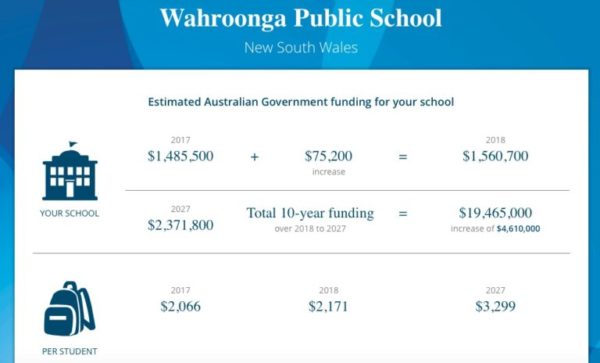The Turnbull Government has initiated a plan to transition to a more equitable, needs-based funding model for Australian schools.
Announced as part of the Australian Government’s 2017-18 budget plans, after heated debate Parliament passed the Australian Education Amendment Bill 2017 on June 23, 2017.
The reform of the Commonwealth’s funding for schools comes more than seven years after Labour commissioned a review of government funding for Australian schools by an expert panel chaired by David Gonski, and six years after they published their report: Review of Funding for Schooling.
The most significant review into schools funding in 40 years, Gonski’s report highlighted that government funding for schools in Australia is below the OECD average and recommended more government funding, better co-ordination between the Commonwealth and the States, and an equitable, needs-based model based on a ‘Schooling Resource Standard’ – a per-student amount, adjusted with loadings for different sectors and socio-economic disadvantage.
Gonski’s recommendations started a debate that has been ongoing ever since. There seems to be overall consensus that they are the way forward, but the implementation and modelling has been contentious. (Noting that increased funding in itself does not necessarily lead to improved outcomes, it’s the way that funding is used.)
The Turnbull Government’s answer, outlined in its Quality Schools reforms, was to grow Commonwealth funding for schools by 75% over the next 10 years, as part of a transition to a single, national, ‘needs-based’ funding model from 2018.
The Government proposed to increase is funding for schools from $17.5 billion in 2017 to $22.1 billion by 2021, and $30.6 billion by 2027, and provide 20% of the SRS for government schools, up from 17%, by 2020, and 80% of the SRS for non-government schools, up from 77%, by 2027. The plan replaces a variety of different funding agreements between governments and school sectors.
The new model, in the form of the Australian Education Amendment Bill 2017, was approved after a few revisions: an extra $5 billion, reduction in roll-out time from 10 to six years, funds to help Catholic schools with the transition, a delay in implementing some provisions, and a review into the calculation of schools’ socio-economic scores.
The Government proposes that the funding will be tied to reforms that support learning outcomes, and has commissioned Gonski to chair a second report, The Review to Achieve Educational Excellence in Australian Schools, to advise how funding should be used to improve student achievement. The panel of experts to conduct this review was confirmed in July 2017:
- Chair – Mr David Gonski AC
- Dr Ken Boston AO
- Mr Terrey Arcus AM
- Dr Lisa O’Brien
- Ms Valerie Gould
- Dr Lee-Anne Perry AM
- Ms Wendy Johnson
- Mr Michael Roberts
The panel’s report with recommendations is due in March 2018. The Government also intends to set up a body to monitor how the funding should be spent.
Funding Calculator
The Government has provided an online school funding estimator, showing per-student funding and an estimate of total funding based on current enrolments for each school under the new model. At time of writing this was being updated to reflect the revisions made prior to the bill being passed.







